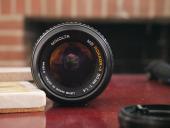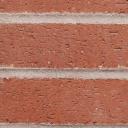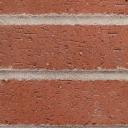
It allows to keep PV going, with more focus towards AI, but keeping be one of the few truly independent places.
-
Here the answer :D.
Firstly, the latest and the better generation of fifties - Minolta MD. Not a Rokkor - it should be plain MD, aka Minolta New MD, Minolta MD III etc.
Secondary, 5 lenses detailed reviewed in this line:
Minolta MD 50mm F3.5 MACRO - still hasn't special review
Finally: All Minolta MD 50mm lenses comparison
And one more: Minolta MC 58mm F1.2 bokeh legend vs. underrated fresh blood Minolta MD 50mm F1.2
-
Years ago, when these lenses were like $5 apiece, I bought a whole bunch of them. More than thirty. Then I sold most of them, although I still have a dozen or so.
The first thing you notice is that if you have three identical ones there can be a huge sample variation, partly because they are so old. Some of them are super sharp, some of them are junk. So to test them, you have to buy at least three copies, maybe even more. Then back on eBay they go.
Of the three basic 50/1.4 formulas, the older one, the MC, is maybe a tad sharper wide open. Unfortunately, it's hard to find a good copy. The 49mm D version is lighter, has better color, balances nicely, has better bokeh (though not the Bokeh of the 58mm) and has a good 3D effect. The 3D effect is a sort of numinous quality that Minolta lenses have to varying degrees. As for the 58mm, it has the Bokeh but not the sharpness. The Vivitar 55 macro is much sharper, as is the incredibly cheap Sigma 60mm. The low contrast of the 58mm makes it a questionable photo lens, but for video you can use it to dial down the contrast for Log for some interesting effects.
If you look at the photo, you can see that it takes a 49mm filter which means it uses the F1.2 design. Since it has green, rather than orange markings on the aperture scale it weighs 15 grams less than the last version of this formula. These 1.4 lenses are sharper across all apertures than the 1.2. It's the same design, but they tweaked the formula.
Of the bucketful of lenses that I tested, the one in the attached photo was the clear winner. At F4 and higher, it is as sharp or sharper than my Olly 45mm, which is a fantastically sharp lens. And yet, on my m4/3 cameras the Rokkor resolves better micro-textures. However, before you run out and buy one, there were several that were not as sharp. And the Olly is sharp wide open, Sharp wide open is why a lot of us switched to m4/3.
Even though my copy was made in 1980, which was 38 years ago, it looks brand new. The level of workmanship is astonishing. Looking at the coatings, it's clear that they upgraded the coatings from the C style and the color is definitely better. It's a rich, glass based, organic color. The Olly is an amazing portrait lens with a beautiful blur for the background and super transitions from edge to background. For a portrait lens, the edge transition is a key factor, so I use the Olly for portraits. For landscapes, I uses the Panasonic 42.2 which is sharp right to the edge.
Still, it's fun to roll the dice on eBay.
 Rokkor X 50 49mm.jpg1800 x 1352 - 261K
Rokkor X 50 49mm.jpg1800 x 1352 - 261K -
Note that wide open, these lenses aren't that sharp. The Olly is way sharper wide open than the Rokkor. There's no legacy glass that is really sharp wide open, but the 8 element Takumar is pretty good, as well as many of the Canon 1.4 lenses.
Here's a comparison at F5.6 of the Rokkor 50 and the Olly 45.
For microtextures, look at the interior grain of the grout lines. The Rokkor captures the microtextures marginally better than the Olly.
 Olly 45mm bricks F56.jpg1200 x 1200 - 479K
Olly 45mm bricks F56.jpg1200 x 1200 - 479K
 Rokkor 50 bricks F56.jpg1200 x 1200 - 473K
Rokkor 50 bricks F56.jpg1200 x 1200 - 473K
Howdy, Stranger!
It looks like you're new here. If you want to get involved, click one of these buttons!
Categories
- Topics List23,997
- Blog5,725
- General and News1,359
- Hacks and Patches1,153
- ↳ Top Settings33
- ↳ Beginners256
- ↳ Archives402
- ↳ Hacks News and Development56
- Cameras2,367
- ↳ Panasonic995
- ↳ Canon118
- ↳ Sony156
- ↳ Nikon96
- ↳ Pentax and Samsung70
- ↳ Olympus and Fujifilm101
- ↳ Compacts and Camcorders300
- ↳ Smartphones for video97
- ↳ Pro Video Cameras191
- ↳ BlackMagic and other raw cameras116
- Skill1,960
- ↳ Business and distribution66
- ↳ Preparation, scripts and legal38
- ↳ Art149
- ↳ Import, Convert, Exporting291
- ↳ Editors191
- ↳ Effects and stunts115
- ↳ Color grading197
- ↳ Sound and Music280
- ↳ Lighting96
- ↳ Software and storage tips266
- Gear5,420
- ↳ Filters, Adapters, Matte boxes344
- ↳ Lenses1,582
- ↳ Follow focus and gears93
- ↳ Sound499
- ↳ Lighting gear314
- ↳ Camera movement230
- ↳ Gimbals and copters302
- ↳ Rigs and related stuff273
- ↳ Power solutions83
- ↳ Monitors and viewfinders340
- ↳ Tripods and fluid heads139
- ↳ Storage286
- ↳ Computers and studio gear560
- ↳ VR and 3D248
- Showcase1,859
- Marketplace2,834
- Offtopic1,320



